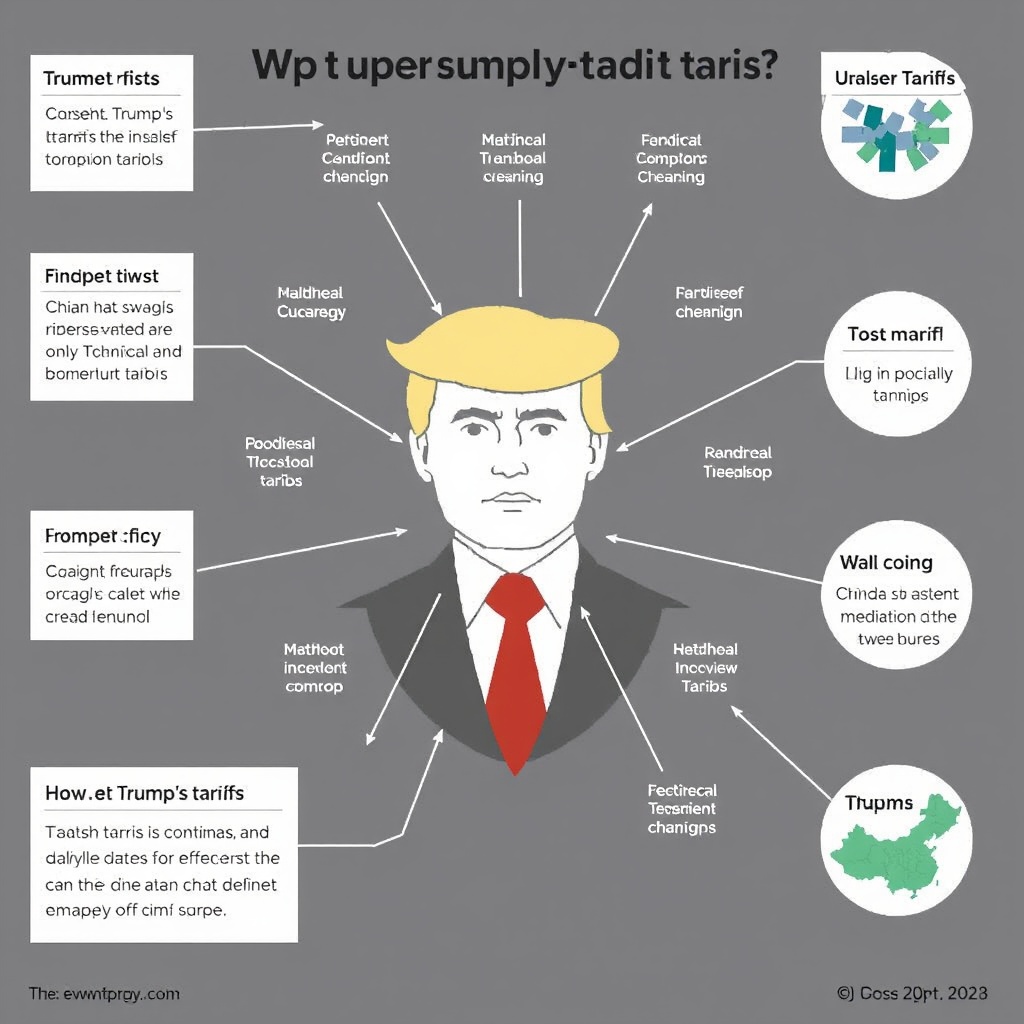Introduction
The topic of tariffs, particularly those imposed by former President Donald Trump, has been a subject of considerable discussion and confusion in recent years. With the constant announcements, postponements, and changes in tariff policies, it can be challenging to keep track of where things stand. This article aims to provide a comprehensive primer on Trump's tariffs, covering the latest developments, their impact on the economy, and the current state of trade policy with China. By exploring the history, effects, and future implications of these tariffs, readers will gain a deeper understanding of this complex issue.
History of Trump's Tariffs
To understand the current state of Trump's tariffs, it's essential to look back at their history. During his presidency, Trump imposed tariffs on various countries, including China, in an effort to address trade imbalances and protect American industries. The first tariffs were imposed in 2018, targeting Chinese goods such as solar panels and washing machines. These tariffs were followed by additional rounds of tariffs on Chinese goods, including steel and aluminum, with rates ranging from 10% to 25%. The tariffs were intended to pressure China into renegotiating trade agreements and reducing its trade surplus with the United States.
For example, in 2018, the Trump administration imposed a 25% tariff on $34 billion worth of Chinese goods, including machinery, electronics, and automobiles. China responded by imposing its own tariffs on $34 billion worth of American goods, including soybeans, corn, and pork. This tit-for-tat approach led to a significant escalation of the trade war, with both countries imposing tariffs on hundreds of billions of dollars' worth of each other's goods.
Impact on the Economy
The impact of Trump's tariffs on the economy has been a topic of debate among economists and trade experts. While some argue that the tariffs have helped to protect American industries and reduce the trade deficit, others claim that they have led to higher prices for consumers, reduced economic growth, and damaged relationships with trade partners.
According to a study by the Tax Foundation, the tariffs imposed by the Trump administration have resulted in a loss of approximately 300,000 jobs and a reduction in economic growth of around 0.3%. The study also found that the tariffs have led to higher prices for consumers, with the average American household paying around $400 more per year due to the tariffs.
On the other hand, some industries, such as the steel and aluminum industries, have benefited from the tariffs. The tariffs have helped to reduce imports and increase domestic production, leading to higher prices and profits for American steel and aluminum producers. For example, the steel industry has seen a significant increase in production and employment since the tariffs were imposed, with some steel producers reporting record profits.
Current State of Trade Policy with China
The current state of trade policy with China is complex and multifaceted. While the two countries have made progress in negotiations, including the signing of the Phase One trade deal in 2020, many issues remain unresolved. The deal, which included provisions on intellectual property, agriculture, and currency, was seen as a positive step towards reducing tensions and improving trade relations.
However, the COVID-19 pandemic and subsequent economic downturn have led to a significant decline in trade between the two countries. The pandemic has also highlighted the need for greater cooperation and coordination on trade policy, particularly in areas such as supply chain resilience and trade facilitation.
In recent months, there have been reports of a potential new trade deal between the United States and China, which could include provisions on issues such as trade liberalization, investment, and competition policy. However, the details of such a deal remain unclear, and it is uncertain whether the two countries will be able to reach a comprehensive agreement.
For instance, the Biden administration has announced plans to review the Phase One trade deal and potentially renegotiate its terms. The administration has also expressed concerns about China's compliance with the deal, particularly in areas such as intellectual property and agriculture. These developments highlight the ongoing challenges and uncertainties in the U.S.-China trade relationship.
Conclusion
In conclusion, the topic of Trump's tariffs is complex and multifaceted, with a history that spans several years and a significant impact on the economy. While the tariffs were intended to address trade imbalances and protect American industries, they have also led to higher prices for consumers, reduced economic growth, and damaged relationships with trade partners.
As the United States and China continue to navigate the complexities of trade policy, it is essential to consider the potential implications of future developments. Will the two countries be able to reach a comprehensive trade agreement, or will tensions continue to escalate? How will the tariffs imposed by the Trump administration affect the economy and trade relationships in the long term?
These questions highlight the need for ongoing monitoring and analysis of trade policy, as well as a deeper understanding of the complex issues at play. By providing a comprehensive primer on Trump's tariffs, this article aims to contribute to a greater understanding of this critical issue and its implications for the future of trade and the economy.
In the future, it will be essential to continue tracking developments in trade policy, including any changes to the tariffs imposed by the Trump administration. The impact of these tariffs on the economy and trade relationships will likely be felt for years to come, and it is crucial to consider the potential implications of future developments.
Ultimately, the story of Trump's tariffs serves as a reminder of the complexities and challenges of trade policy, and the need for careful consideration and analysis of the potential implications of any trade agreement or policy. By providing a comprehensive and engaging exploration of this topic, this article aims to contribute to a greater understanding of the complex issues at play and the potential implications for the future of trade and the economy.


Leave a comment